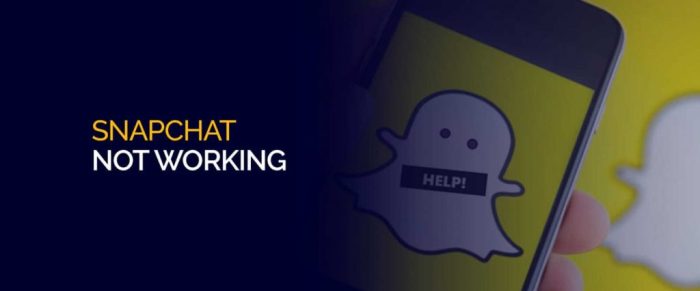Background and Context
Snapchat, a popular social media platform, has always been known for its emphasis on ephemeral content and its innovative features. However, the platform’s relationship with third-party apps has been a subject of much debate and change over the years. This shift towards limiting access for third-party apps is a recent development with significant implications for both Snapchat users and developers.
The Evolution of Third-Party Integration
Snapchat initially embraced third-party app integration, allowing developers to build apps that could interact with the platform and enhance user experiences. This led to a thriving ecosystem of apps that offered a wide range of functionalities, including:
- Snap-saving apps: These apps allowed users to download and save snaps from their Snapchat feed, a feature not initially available on the platform itself.
- Story editing apps: These apps provided tools for creating and editing stories, offering more creative options than Snapchat’s built-in tools.
- Social sharing apps: These apps facilitated sharing Snapchat content on other social media platforms, extending the reach of snaps beyond the Snapchat community.
These third-party apps provided valuable services to Snapchat users, expanding the platform’s functionality and appeal. They also contributed to Snapchat’s popularity by promoting its use and attracting new users. However, as Snapchat evolved, its relationship with third-party apps began to change.
Technical Implications
Snapchat’s decision to block third-party apps from accessing its platform has significant technical implications. The move restricts developers from utilizing specific APIs and features, creating challenges in integrating Snapchat functionality into their applications.
Impact on Developers
The blocked access to Snapchat’s APIs directly impacts developers’ ability to integrate with the platform. Developers rely on these APIs to access core functionalities like user data, messaging, and content sharing. Without these tools, developers are forced to find alternative solutions or abandon their integration plans altogether.
Illustrative Scenario
Imagine a developer creating a social media aggregator app. They intend to incorporate Snapchat’s features, allowing users to share content directly from the app to their Snapchat stories. The developer relies on Snapchat’s API to handle user authentication, content upload, and story creation. However, due to the block, this integration becomes impossible.
The developer faces several challenges:
- Loss of Direct Access: The developer can no longer directly access Snapchat’s core features through the API. This limits their ability to interact with Snapchat’s user interface and data.
- Alternative Solutions: The developer must explore alternative solutions, such as using screen scraping techniques or relying on unofficial APIs. These solutions are often less reliable, more complex, and prone to errors.
- User Experience Degradation: Without seamless integration, the user experience suffers. Users may find it cumbersome to switch between apps to share content, leading to frustration and potential abandonment of the app.
User Experience and Privacy
Snapchat’s decision to block third-party apps from accessing user data could significantly impact user privacy and data security. While the move aims to enhance user control and security, it may also create unintended consequences for both users and developers.
Impact on User Privacy and Data Security
The block could potentially enhance user privacy by limiting the amount of data third-party apps can access. This could reduce the risk of data breaches and unauthorized access to sensitive information. However, it could also lead to users relying on fewer apps, potentially concentrating their data with Snapchat itself. This raises concerns about the potential for data misuse or exploitation by Snapchat.
User Experience Before and After the Block
Before the block, users enjoyed the convenience of accessing their Snapchat data through various third-party apps, such as backup tools, analytics platforms, and social media management tools. These apps offered features that Snapchat itself didn’t provide, enriching the overall user experience.
After the block, users may face limitations in managing their Snapchat data and interacting with the platform. They might struggle to back up their data, analyze their usage patterns, or manage their accounts effectively. This could lead to frustration and a decline in user satisfaction.
Potential User Complaints and Concerns
- Loss of Functionality: Users might complain about the loss of functionality offered by third-party apps, particularly those related to data backup, analytics, and social media management.
- Limited Data Control: Users may feel restricted in their ability to manage their Snapchat data, as they are now limited to the features provided by Snapchat itself.
- Data Concentration: Users could be concerned about the potential for data misuse or exploitation by Snapchat, given that their data is now concentrated within the platform.
- Lack of Transparency: Users may demand greater transparency from Snapchat regarding the data it collects, how it is used, and the security measures in place to protect it.
- Impact on Developers: Developers of third-party apps may face challenges in adapting to the new restrictions, potentially leading to job losses or a decline in innovation within the Snapchat ecosystem.
Business Implications
Snapchat’s decision to block third-party apps from accessing its platform has significant business implications for both Snapchat and the developers who rely on its API. The move could reshape the landscape of how Snapchat interacts with its user base and the broader app ecosystem.
Financial Impact on Snapchat and Developers
The decision to restrict third-party access could have a mixed financial impact on Snapchat and developers.
Here’s a breakdown of the potential pros and cons for both parties:
| Party | Pros | Cons |
|---|---|---|
| Snapchat |
|
|
| Developers |
|
|
Long-Term Strategic Goals of Snapchat
Snapchat’s decision aligns with its long-term strategic goals of:
- Strengthening brand identity and user experience: By controlling access to its platform, Snapchat aims to ensure a consistent and unified user experience, reinforcing its brand identity and differentiating itself from competitors.
- Prioritizing user privacy and data security: This move is likely a response to increasing concerns about data privacy and security, demonstrating Snapchat’s commitment to protecting user information.
- Maximizing monetization opportunities: By focusing on its own platform and features, Snapchat can potentially attract more advertisers and generate higher revenue from targeted advertising campaigns.
Alternatives and Solutions: Snapchat Blocks Off Access From Third Party Apps
Snapchat’s decision to block third-party apps from accessing its platform has created a significant hurdle for developers and users alike. While Snapchat aims to enhance user privacy and control, it’s crucial to explore alternative solutions that strike a balance between security and innovation.
This section delves into alternative methods for developers to integrate with Snapchat, suggests ways Snapchat can address concerns, and explores the potential benefits of a more open platform.
Alternative Integration Methods
Developers can still access Snapchat’s features through various methods, even without direct API access. Here are some potential alternatives:
* Webhooks and Event Triggers: Snapchat can offer webhooks and event triggers for developers to receive notifications about user actions within the app. This enables developers to build external tools that react to specific events, like new friend requests or message interactions.
* Public APIs for Limited Data: Snapchat could release public APIs that provide limited access to specific data, like user profiles or public content. This would allow developers to build apps that complement Snapchat’s functionality without compromising user privacy.
* Third-Party Platforms: Developers can leverage third-party platforms that offer integrations with Snapchat. These platforms can act as intermediaries, enabling developers to access limited Snapchat data and functionalities.
Addressing Developer Concerns
Snapchat needs to address the concerns of developers to foster a thriving ecosystem:
* Transparency and Communication: Open communication about platform changes and future plans is crucial. Clear guidelines and documentation will help developers understand the rules and adapt their strategies.
* Developer Support: Snapchat should provide dedicated support channels for developers to address technical issues, receive guidance, and get assistance with integrating their apps.
* Sandbox Environments: Offering sandbox environments where developers can test their integrations before launching them to the public would help prevent issues and ensure smooth integration.
Benefits of a More Open Platform, Snapchat blocks off access from third party apps
A more open platform would benefit both Snapchat and developers:
* Increased Innovation: Developers can leverage Snapchat’s vast user base and data to build innovative apps and services that enhance the user experience.
* Enhanced User Engagement: A wider range of third-party apps could lead to increased user engagement and retention, as users find new ways to interact with the platform.
* New Revenue Streams: Snapchat could explore new revenue streams by partnering with developers and monetizing the use of its platform.
Snapchat blocks off access from third party apps – The decision to block third-party app access is a bold move by Snapchat, with potential ramifications for both developers and users. While it aims to enhance user privacy and control, it might also hinder innovation and limit user experiences. The future of Snapchat’s ecosystem remains uncertain, but one thing is clear: this decision will shape how the platform evolves and interacts with its community in the years to come.
Snapchat’s recent move to block third-party app access is a big deal, especially considering the growing popularity of apps that integrate with the platform. This might be a blow for some developers, but it could also be a sign of things to come. It’s a reminder that the tech landscape is constantly evolving, and the demand for innovative devices like the Samsung Galaxy S6 Edge, rumored to have tripled its production according to recent reports , is a testament to that.
As technology advances, we can expect more changes in how we interact with apps and platforms like Snapchat, pushing developers to adapt and find new ways to engage users.
 Standi Techno News
Standi Techno News

